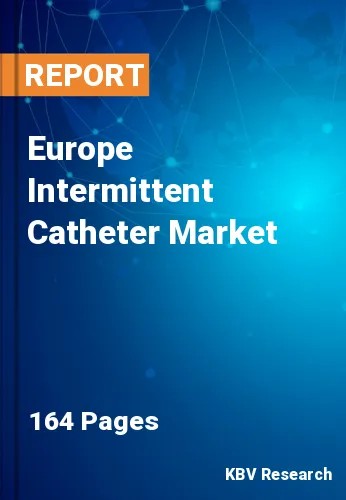
The Europe Intermittent Catheter Market would witness market growth of 4.4% CAGR during the forecast period (2023-2030). In the year 2020, the Europe market's volume surged to 1,47,002.5 thousand units, showcasing a growth of 4.7% (2019-2022).
The healthcare landscape is witnessing transformative shifts, and among the notable areas of evolution is managing urinary disorders through intermittent catheterization. Once relegated to a niche within urological care, Intermittent catheters have become a vital tool in improving the quality of life for individuals with various urinary conditions. The paradigm shift towards home healthcare is a notable trend shaping the adoption landscape. The convenience and cost-effectiveness of managing urinary disorders through intermittent catheterization in the comfort of one's home have spurred an increased preference for home-based care. This shift is patient-centric and aligns with broader healthcare strategies to reduce hospital stays and enhance patient autonomy.
Intermittent catheters have emerged as instrumental tools in the management of urinary incontinence. As a prevalent condition, urinary incontinence significantly impacts the quality of life for individuals of all ages. The discreet and effective nature of intermittent catheters has positioned them as a preferred choice for those seeking an active and independent lifestyle while managing the challenges of urinary incontinence. Antimicrobial-coated catheters contribute to infection control practices recommended by healthcare authorities. These coatings act as an additional layer of protection, supporting healthcare providers in adhering to stringent infection prevention measures.
As per the data from the Office for National Statistics of the United Kingdom, the Census results 2021 show that the population of England and Wales has continued to age and that there are now more people than ever in older age categories. More than 11 million persons, or 18.6% of the entire population, were 65 years of age or older, up from 16.4% in the 2011 census. This includes over half a million individuals, or 527,900 individuals, who were 90 years of age or older. In England and Wales, the median (average) age increased from 39 to 40 years between 2011 and 2021, indicating the changing demographics of the population. Therefore, the increasing aging population in Europe will drive the expansion of the regional market.
The Germany market dominated the Europe Intermittent Catheter Market by Country in 2022, and would continue to be a dominant market till 2030; thereby, achieving a market value of $185.8 million by 2030. The UK market is experiencing a CAGR of 3.4% during (2023 - 2030). Additionally, The France market would exhibit a CAGR of 5.2% during (2023 - 2030).
Free Valuable Insights: The Global Intermittent Catheter Market will Hit USD 3.1 Billion by 2030, at a CAGR of 4.7%
Based on Product, the market is segmented into Uncoated, and Coated. Based on Coated Type, the market is segmented into Hydrophilic, Antimicrobial, and Others. Based on Indication, the market is segmented into Urinary Incontinence, Spinal Cord Injuries, General Surgery, and Others. Based on End User, the market is segmented into Hospitals, Ambulatory Surgical Centers, and Medical Research Centers. Based on Category, the market is segmented into Female Length Catheter, Male Length Catheter, and Kid Length Catheter. Based on countries, the market is segmented into Germany, UK, France, Russia, Spain, Italy, and Rest of Europe.
By Product (Volume, Thousand Units, USD Billion, 2019-2030)
By Indication (Volume, Thousand Units, USD Billion, 2019-2030)
By End User (Volume, Thousand Units, USD Billion, 2019-2030)
By Category (Volume, Thousand Units, USD Billion, 2019-2030)
By Country (Volume, Thousand Units, USD Billion, 2019-2030)
Our team of dedicated experts can provide you with attractive expansion opportunities for your business.
